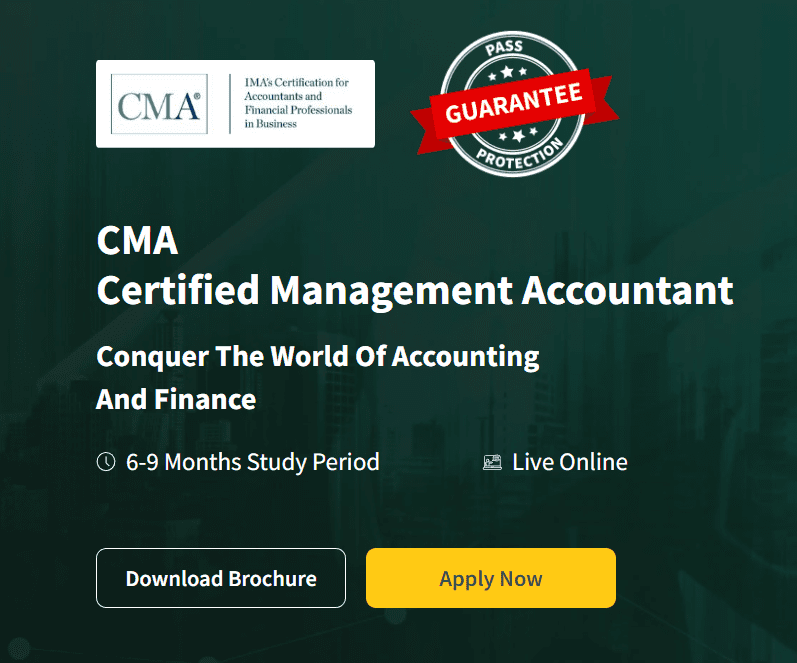Data or numbers are quite important for a company, whether to project revenue or estimate costs. Thus to ensure success, any company needs to analyse its numbers properly. Financial modelling is one tool that helps represent a company's data, past, present and even predicted future. It is used for accurate decision-making. Executives can use this tool for cost and profit estimation of any new project.
One popular financial modelling tool is CAPM or Capital Asset Pricing Model, often used in corporate finance. It helps to understand the relationship between market fluctuations and the risk posed by an asset or security, like a stock.

The projected employment growth for financial analysts is 9% between 2021 to 2031, thus making it an ideal career choice. If you want to become a financial analyst, then this is the correct time to take up a financial analysis course. Gain a basic understanding of a few financial models before embarking on a journey to become a financial analyst.
This article examines the CAPM model, its components, working, benefits, drawbacks and so on.
Capital Asset Pricing Model: What Is It?
Every investment comes with a risk and a return. The Capital Asset Pricing Model helps to understand this very relationship between investment risks and expected returns. It helps estimate the probable investment returns and determine the security or stock prices.
CAPM assessment demands a thorough understanding of unsystematic and systematic risks. The model was designed in the early 1960s primarily to estimate systematic risk, a risk which an institution can not avoid. For instance, risks related to inflation, recession, exchange rate, interest rate, etc.
However, unsystematic risks are those related to investments in specific equities or stocks and are thus not regarded as huge threats. These risks are shareable in the general market. Thus, CAPM helps forecast the success or failure of investment by analysing the systematic risks.
CAPM Assumptions
Here are the assumptions of the CAPM Model:
- A diversified portfolio managed by investors
- Investors will lend and borrow at a risk-free return rate.
- A perfect capital market where every security is valued correctly.
CAPM Formula
Here is the formula for the Capital Asset Pricing Model assessment:
Ra = Rf + Be x (Rm – Rf)
Where,
- Ra denotes the expected rate of return
- Rf denotes the risk-free return rate
- Be is the beta factor of the transaction
- Rm - Rf denotes the market risk premium
What Are the Various CAPM Components?
Read this section to find out more about each CAPM component.
Expected rate of return
The expected rate of return is the amount the investor will fetch from investing in an asset. It is based on multiple factors like beta, market risk premium, etc. It's a long-term presumption about how any investment can roll over in its lifetime.
Risk-free return rate
A risk-free return rate denotes money's value over time. It is measurable in terms of the yield generated by a 10-year-old government bond of the United States. U.S.-based securities are usually taken as a baseline for this component since it's highly improbable that the U.S. government would default on payment. Thus, no payment default is synonymous with minimal risks for the investors.
Beta
Beta measures the volatility of any stock, equity, investment, or asset. It provides an idea about a stock's risk by analysing its price fluctuation concerning the overall investment market. In other words, the beta factor shows an asset's sensitivity towards market fluctuations.
Sensitive stocks have incredibly high beta and are thus volatile, while a more stable asset will have low beta and will be less volatile. Measured in number, 1 is the benchmark. Any stock having a beta less than 1 is more stable than market fluctuations and is thus less volatile.
Assets with a beta of more than 1 are less stable than market fluctuations and more volatile. Stocks with negative beta values have an inverse relationship with fluctuations in the market.
Market risk premium
A market risk premium is the investor's reward for taking a riskier investment rather than opting for a low or zero-risk one. Assets, stocks, or investments with more significant risks have a higher market risk premium than the ones with lesser risks.
CAPM Calculation Example
Here's an example to understand CAPM calculation better.
Let's assume that an investor plans to invest in an equity valued at ₹100 per share today. It generates an annual dividend of 3%. Let us further assume that the beta here is 1.3, and 3% is the risk-free rate. We also assume that the investor predicts the market value to soar at 8% per year.
Thus, the expected rate of return = 3% + 1.3 × (8%−3%) = 9.5%
What Are the Advantages of Using CAPM?
The advantages of using CAPM are as follows:
- Easy to use because of the simple formula.
- Eliminates the assumption of unsystematic risks and only considers systematic risks. It indicates the reality since most investors keep a diversified portfolio.
- The relationship between return and market risks has been derived theoretically after testing and empirical research.
What Are the Shortcomings of CAPM?
There’s hardly a doubt that CAPM is a highly effective model. However, this effectivity is also paired with the following drawbacks:
- The risk-free return rate can fluctuate in a few days, while the model considers short-term securities. This is a crucial flaw.
- Beta determination can be time-consuming and challenging at times.
- The unrealistic assumption is that the investors can lend or borrow at the same rate as the government.
Conclusion
Finance professionals must have a thorough understanding of financial modelling tools to help them examine the various financial aspects of an organisation. Enrol in a financial analysis course to upskill and launch a successful career as an investment banker or financial analyst.
The Financial Analysis Prodegree offered by Imarticus in collaboration with KPMG is a 4-month course focused on helping learners secure a career in financial analysis, investment banking, corporate finance, and various other financial sector. Delivered by industry practitioners, the course offers 360-degree learning with industry certifications.
Explore Imarticus Learning to learn more.











